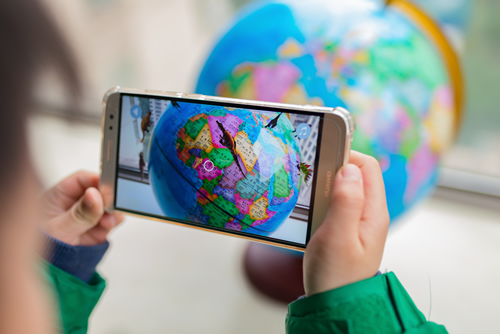In her post, “Now is the Time to Redefine Readiness [1],” my colleague Katherine Prince detailed how the world of work is changing, creating an urgent need to redefine what it means to be ready, and proposed a new foundation for readiness that prioritizes:
- Deep self-knowledge will help people develop visions for our lives and continue to discover their own personal and professional strengths, weaknesses, passions, and emotional patterns.
- Individual awareness will help people recognize and regulate our emotions; understand the triggers that spark them; and shift to more desired, productive emotional states when needed.
- Social awareness will help people recognize others’ emotions and perspectives, enabling us to build relationships in support of learning, collaboration, and innovation and foster inclusive work environments.
The exponential advances of digital technologies are one of the main drivers of change reshaping work and creating the need to redefine readiness, but they may also help educators support young people’s development of key future readiness skills. Three digital technologies in particular–wearables, augmented reality (AR), and virtual reality (VR)–show great promise in helping to cultivate social-emotional skills such as those in the new foundation for readiness:
Wearables, AR, and VR have the potential to support educators and other education stakeholders in creating experiences characterized by immersion, embodiment, contextualization, and self-awareness, all vital for developing deep self-knowledge, and individual and social awareness.
Can enable deeper understanding and connections to material and concepts.
Can support simulation of real-world contexts or actions.
Can aid in understanding different perspectives and points of view, supporting development of critical thinking and social-emotional skills.
Can help make concepts more vivid.
The placement of something, such as a word, action, place, or event, into a larger frame that provides more information.
Can enable development of deeper understanding or comprehension of a concept or subject.
Can enable students to share their perspectives in relation to the object or place of interest.
Self-Awareness
Clear perception of one’s strengths, weaknesses, emotions, and motivations.
Can lead to increased levels of self-knowledge, supporting greater degrees of purpose and student agency.
Can support reflection on learning, including the creation of personal learning profiles.
Can support learners in setting and pursuing goals.
Such experiences could be used by educators and students to help cultivate the knowledge, skills, and dispositions that they will need to succeed in the future. Specifically, new types of supports, learning environments, and opportunities to reflect and collaborate could emerge. For example:
- New and expanded streams of data, enhanced connectivity, and new platforms for collaboration could provide learners with personal, just-in-time learning supports.
- Classmates could collaborate on challenges in simulated environments, discovering which kinds of responses and behavior yield the best outcomes.
- Individual and group project work sessions could be documented in ways that enable students to monitor their own performance data so as to cultivate self-knowledge and awareness.
- Learners could engage in virtual experiences that allow them to assume the identity of others, allowing them to walk a mile in someone else’s shoes to help develop empathy and perspective taking.
- Learners and educators could layer digital information over the physical world to build context around important issues.
As education wrestles with the implications of the changing nature of work, thinking through how to leverage technologies like wearables, AR and VR for learning could be an important step in making sure learners are ready for the future of work. However, for these technologies to be used in experiences that help the development of key readiness skills, technology developers will have to think intentionally about their design with significant input from education stakeholders. Additionally, educators will need to thoughtfully consider their application, thinking critically about how and when these technologies might be employed.
For more information of how wearables augmented reality and virtual reality might for learning in the future, see KnowledgeWorks’ “Leveraging Digital Depth for Responsive Learning Environments: Future Prospects for Wearables, Augmented Reality and Virtual Reality [2].”
[Editor’s Note: Part 2 of this series will present a frame for thinking about how to use emerging technologies like the ones in this article to create responsive learning environments.]
